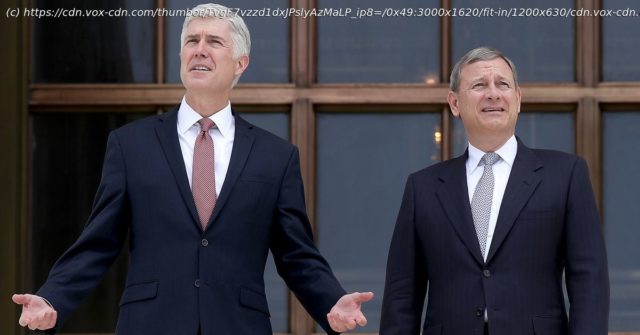The Court is barely even pretending to be engaged in legal reasoning.
On Thursday, the Supreme Court handed down a pair of unsigned opinions that appear to be at war with each other. The first, National Federation of Independent Business v. Department of Labor, blocks a Biden administration rule requiring most workers to either get vaccinated against Covid-19 or to routinely be tested for the disease. The second, Biden v. Missouri, backs a more modest policy requiring most health care workers to get the vaccine. There are some things that differentiate the two cases. Beyond the fact that the first rule is broader than the second, the broader rule also relies on a rarely used provision of federal law that is restricted to emergencies, while the latter rule relies on a more general statute. But the Court gives little attention to substantive differences between the laws authorizing both rules. Instead, it applies an entirely judicially created doctrine and other standards in inconsistent ways. The result is two opinions that are difficult to reconcile with each other. The NFIB case relies heavily on something known as the “major questions doctrine,” a judicially invented doctrine which the Court says places strict limits on a federal agency’s power to “exercise powers of vast economic and political significance.” As the NFIB opinion notes, the vaccinate-or-test rule at issue in NFIB applies to “84 million Americans” — quite understandably a matter of vast economic significance. But, if this manufactured doctrine is legitimate, then it’s not at all clear why it doesn’t apply with equal force in both cases. As Justice Clarence Thomas points out in a dissenting opinion in the Missouri case, the more modest health workers’ rule “has effectively mandated vaccination for 10 million healthcare workers.” That’s still an awful lot of Americans! What if the Biden administration had pushed out a rule requiring 20 million people to get vaccinated? Or 50 million? The Court does not tell us just how many millions of Americans must be impacted by a rule for it to count as a matter of “vast economic and political significance.” And it’s hard to draw a legally principled distinction between 10 million workers and 84 million. Similarly, in NFIB, the Court notes that the agency which created the broad rule at issue in that case is the Occupational Safety and Health Administration (OSHA) which, as its name suggests, deals with health threats that arise in the workplace, and Covid-19 is not unique to the workplace. “COVID–19 can and does spread at home, in schools, during sporting events, and everywhere else that people gather,” the majority opinion notes. But, as the three liberal justices point out in dissent, OSHA regulates threats that exist both inside and outside the workplace all the time, including “risks of fire, faulty electrical installations, and inadequate emergency exits.” It’s not at all clear why Covid-19 is any different. And the only explanation that the majority opinion gives — that a vaccination “cannot be undone at the end of the workday,” unlike the donning of fire-safety gear — applies with equal force to both the OSHA rule and the narrow health worker’s rule that the Court refused to block. Doctors’ vaccinations can’t be undone any more than an office worker’s can be. The Court, in other words, appears unable to articulate a principled reason why some vaccination rules should stand and others should fall. In the past, when the Court was unable to come up with principled ways to separate good rules from bad ones, it deferred to the federal agencies that promulgated those rules. The Court reasoned that it is better to have policy decisions made by expert agencies that are accountable to an elected president than to have purely discretionary decisions made by unelected judges with no relevant expertise. But the one thing that is apparent from NFIB and Missouri is that this age of deference is over. The opinions suggest that the Court will uphold rules that five of its members think are good ideas, and strike down rules that five of its members think are bad ideas.






